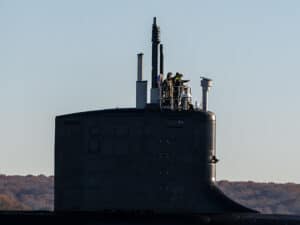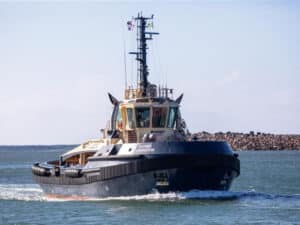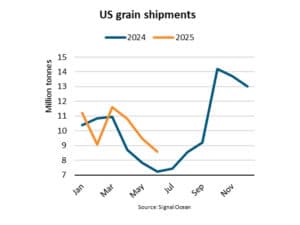
New CRS report analyzes what’s involved in getting to 355-ship Navy
Written by Nick Blenkey
NOVEMBER 28, 2017 — The current and planned size and composition of the Navy, the rate of Navy ship procurement, and the prospective affordability of the Navy’s shipbuilding plans have been oversight matters for the congressional defense committees for many years and the Congressional Research Service (CRS) has now released a report that will give legislators an insight into what sort of fleet the Navy is looking for, the options and timelines for achieving that fleet — and the costs to the taxpayer.
Entitled “Navy Force Structure and Shipbuilding Plans: Background and Issues for Congress,” the report notes, in its summary that the Navy’s proposed FY2018 budget, as amended on May 24, 2017, requests the procurement of nine new ships, including one Gerald R. Ford (CVN-78) class aircraft carrier, two Virginia-class attack submarines, two DDG-51 class destroyers, two Littoral Combat Ships (LCSs), one TAO-205 class oiler, and one towing, salvage, and rescue ship.
On December 15, 2016, the Navy released a new force-structure goal that calls for achieving and maintaining a fleet of 355 ships.
The 355-ship force-level goal is the result of a Force Structure Assessment (FSA) conducted by the Navy in 2016 and replaces a 308-ship force-level goal released in March 2015.
The actual size of the Navy in recent years has generally been between 270 and 290 ships.
Compared to the previous 308-ship force-level goal, the new 355-ship force-level goal includes 47 additional ships, or about 15% more ships. More than 47 ships, however, would need to be added to the Navy’s 30-year shipbuilding plan to achieve and maintain the Navy’s 355-ship fleet, unless the Navy extends the service lives of existing ships beyond currently planned figures and/or reactivates recently retired ships:
CRS estimates that 57 to 67 ships would need to be added to the Navy’s FY2017 30-year (FY2017-FY2046) shipbuilding plan to achieve the Navy’s 355-ship fleet and maintain it through the end of the 30-year period (i.e., through FY2046).
The Congressional Budget Office (CBO) estimates that 73 to 77 ships would need to be added to the Navy’s FY2018 30-year (FY2018-FY2047) shipbuilding plan to achieve the Navy’s 355-ship fleet and maintain it not only through the end of the 30-year period (i.e., through FY2047), but another 10 years beyond the end of the 30-year period (i.e., through FY2057).
Even with increased shipbuilding rates, achieving certain parts of the 355-ship force-level goal could take many years. CBO estimates that the earliest the Navy could achieve all elements of the 355-ship fleet would be 2035. Extending the service lives of existing ships and/or reactivating retired ships could accelerate e the attainment of certain parts of the 355-ship force structure.
Procuring the additional ships needed to achieve and maintain the Navy’s 355-ship fleet would require several billion dollars per year in additional shipbuilding funds, but those funds are only a fraction of the total costs that would be needed to achieve and maintain the Navy’s 355-ship fleet instead of the Navy’s previously envisaged 308-ship fleet.
CBO estimates that, adding together both shipbuilding costs and ship operation and support (O&S) costs, the Navy’s 355-ship fleet would cost an average of about $11 billion to $23 billion more per year in constant FY2017 dollars than the Navy’s previously envisaged 308-ship fleet. This figure does not include additional costs for manned aircraft, unmanned systems, and weapons.
If defense spending in coming years is not increased above the caps established in the Budget Control Act of 2011, achieving and maintaining a 355-ship fleet could require reducing funding levels for other Department of Defense (DOD) programs.
Navy officials have indicated that, prior to embarking on a fleet expansion, they would first like to see additional funding provided for overhaul and repair work to improve the readiness of existing Navy ships, particularly conventionally powered surface ships, and for mitigating other shortfalls in Navy readiness.
Download the full report HERE





Leave a Reply
You must be logged in to post a comment.